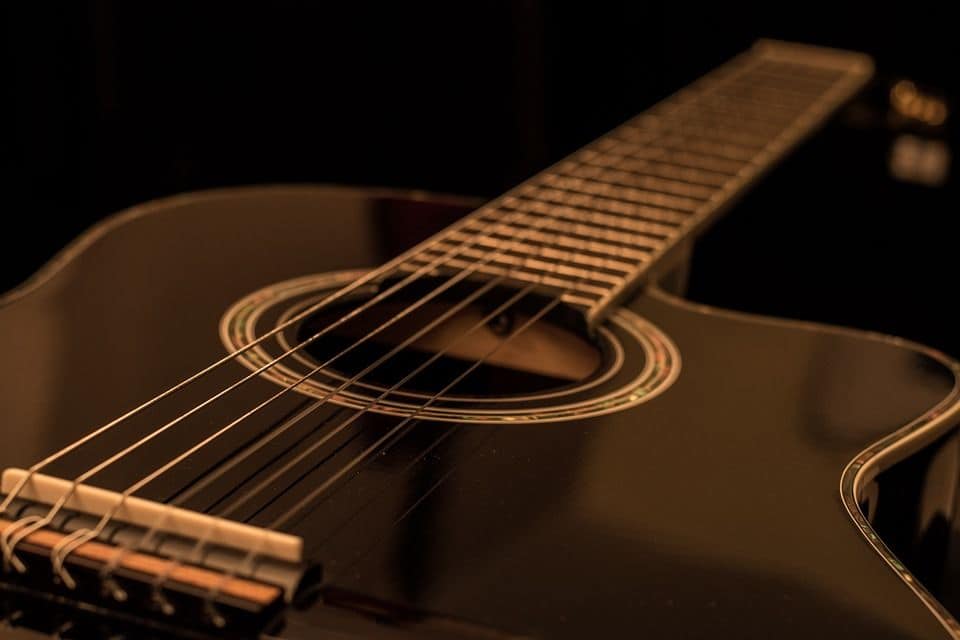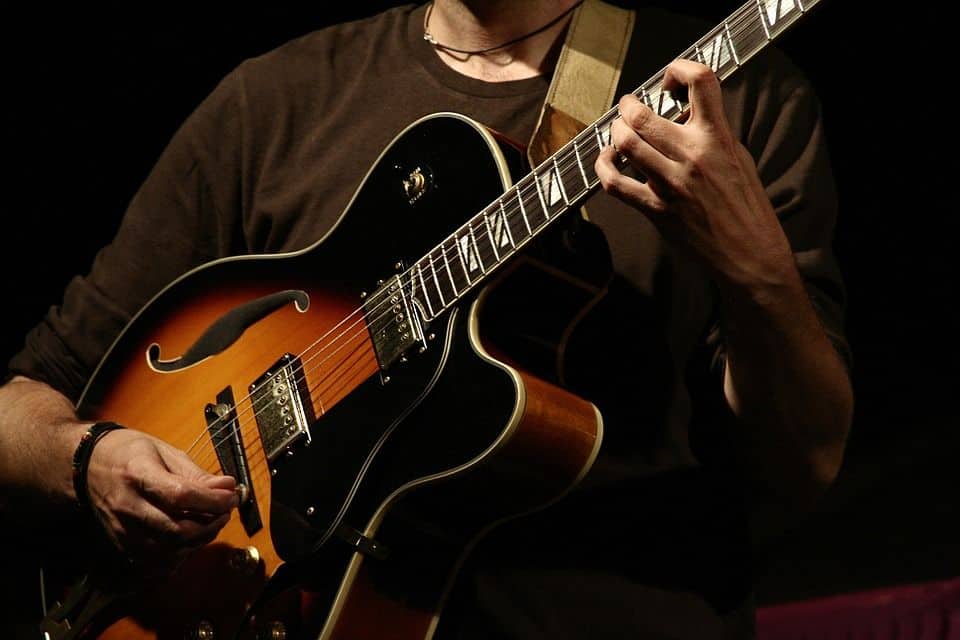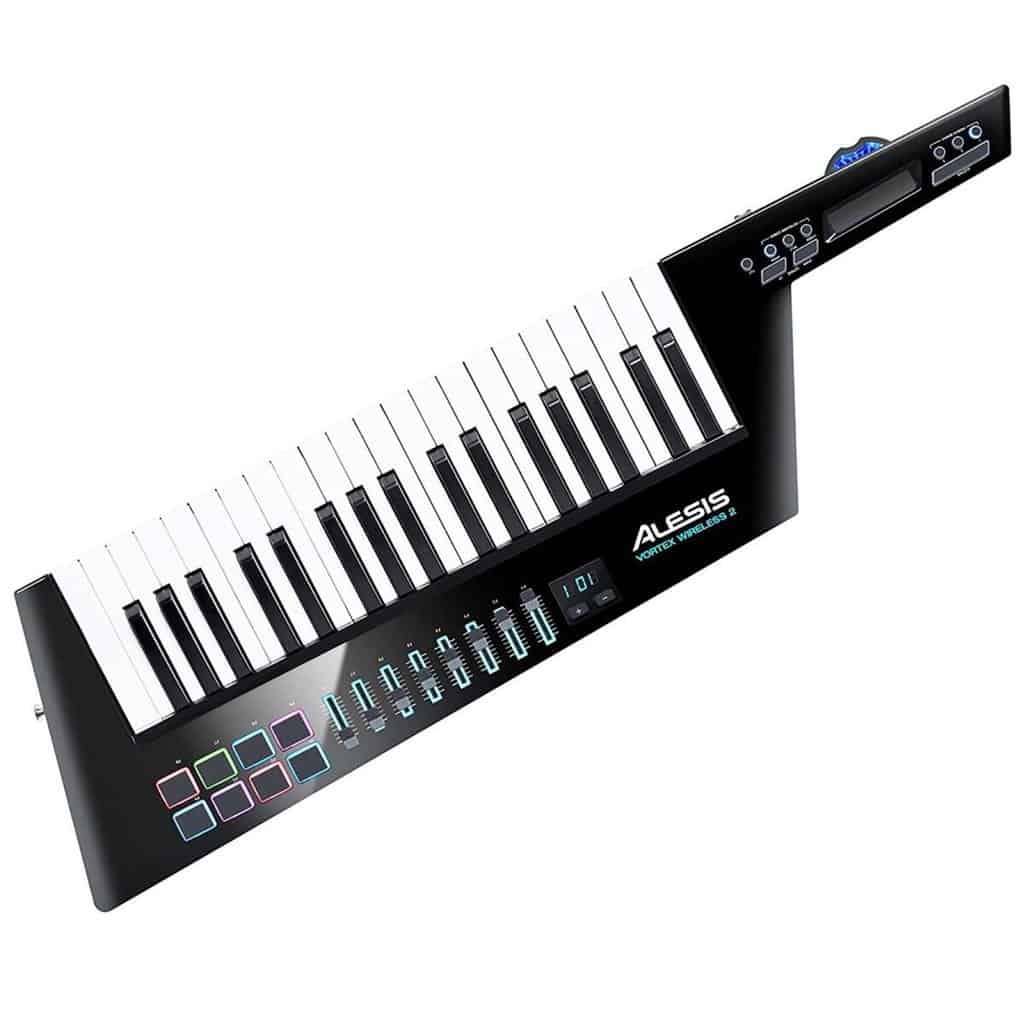
The guitar is one of the most popular instruments in the world, and it may even be the most played instrument due to a lot of reasons starting with the fact that it’s easy to move unlike a piano, it’s easier to get into, unlike the violin, and it’s a very flexible instrument when it comes to genres, with a good amount of songs coming from classical, to rock and jazz, there is nothing untouched by the greatness of a guitar.
This last aspect of the guitar is definitely its greatest quality, but it wouldn’t be accomplished if there weren’t so many types of guitars in order to get different sounds and textures to adapt to different genres in music.
Whether you want to learn how to play guitar, you’re a beginner, or you are an experienced guitar player looking to try something new, you will find this article useful and very enjoyable as we go through every type of guitar and what they are all about.
Classical Guitar

This is the oldest type of guitar and probably the base for everything that came after, with 6 strings, a wooden body, and nylon strings.
However, this was the evolution of various string instruments that came before, including the sitar, lute, and more, dating back thousands of years.
Since the 19th-century people have been able to enjoy the sounds of guitars, which back then offered soft and mellow sounds as opposed to today’s bright and sharp tones that we are used to.
Another big difference with more popular guitars today is in the fretboard. Classical guitars have wide fretboards, which are different enough to make you feel strange if you go from playing an electric guitar for years and then trying a classical guitar. This helps with the type of playing that genres like flamenco and classical compositions require, which also include fingerpicking and no picks.
Acoustic Guitar (Steel String Guitar)

Some people would argue that this is the most common type of guitar when someone thinks about the word “guitar”, and they may be right since it’s probably been used in almost every genre of music there is and it’s the go-to guitar for beginners most of the time.
This guitar has a few differences from the classical guitar that makes it a lot more different than some people might think.
In the early 1900s, steel strings started to appear and became popular due to their brighter, louder sound when compared to the original classical guitar.
This was the sound that appealed to Jazz and Blues, so it makes sense that this guitar eventually cemented itself as the most popular type.
Electric Guitar
It’s hard to say which is more popular, the acoustic or the electric guitar, but one thing’s for sure, the electric guitar is the coolest type of guitar you can get, it’s loud, stylish and it’s sound can be modified in so many ways that it’s almost impossible to find the end of the journey that is “finding your sound”.
These guitars appeared in the early 20th century and also feature steel strings and are made of wood (most of the time), however, there is no resonator, and this time the sound comes from the vibrations picked up by the pickups, which are then turned into a signal reproduced by amps or speakers.
That is where the magic happens, that signal can be altered and changed in endless ways with pedals, preamps, processors, and hundreds of knobs that will change the tone, volume, reverb, and add effects like overdrive, distortion, delay, and many many more.
This is also the easiest type of guitar to use when recording, mainly because you don’t have to deal with the issues that come with the acoustic guitar and the room, the reverb, and the external sounds, you can just connect it directly to an interface and make the sound you want
Twelve String Guitar

These guitars have a simple idea behind them, it’s just the same as the acoustic guitar just double the strings.
The tuning is also the same but when you add an extra string for every note you play, the tone and overall sound are a lot fuller.
The idea is that the lower strings are often one octave down, and when combined with the thinner strings, it gives an amazingly authentic sound that will make you feel like a one-man band.
Electro-Acoustic Guitar
When you think about an “in-between” of an electric guitar and an acoustic guitar you might think of an electro-acoustic guitar, and while it is a combination of the two in the sense that it has a resonator as well as a pickup, these guitars are mostly used to amplify the sound of an acoustic guitar.
The cool thing about it is that you can also add effects such as reverb, delay, and more, but we don’t recommend you use overdrive or distortion, since you will get a very muddy sound and feedback due to the resonating nature of an acoustic guitar.
Resonator Guitar

What if you want the loudness without a pickup? Well, you could consider a resonator guitar. These guitars were made with “loudness” in mind, although if you have access to an electro-acoustic guitar you can get as loud as you want.
Fortunately for these guitars, loudness is not all that makes them popular, it’s the unique sound that works so well with bluegrass and folk that stuck around in people’s heads and that is often used today as the main marketing focus to turn heads towards these beauties.
Archtop and Semi-Hollow Guitar

These guitars are interesting because we just mentioned the fact that having an electro-acoustic guitar with overdrive was not a good idea due to the feedback caused by its resonating body, but what if you have this same idea in a more controlled design?
That is exactly what these types of guitars do deliberately give the player feedback that makes it great for Jazz, Blues, and also Rock!
The Archtop and Semi-Hollow are very similar, the only difference is that the Archtop is a lot more expensive now and
Lapsteel Guitar

This type of guitar has a very specific use, and like its name, this guitar is played while the guitar is on your upper legs facing upwards. The idea is that this guitar isn’t played the traditional way, you have to use a slide to play it.
You may have seen this one a lot for the country and Hawaiian-style music.
These guitars started to become popular around the 40s and 50s and it’s still used quite a bit to this day.
Multi Neck Guitar

The multi-neck guitar looks like a very crazy thing, but the truth is that the inspiration for this type of guitar was around hundreds of years ago
This idea came back in the 50s and then exploded in the 70s with all the wild inventions rock bands were making.
Pocket Guitar

As we got closer to the 21st century, everything started to get progressively smaller, phones, computers, mp3 players, but instruments remained mostly the same.
However, an attempt was made to make a guitar that was considerably smaller than a normal guitar, unfortunately, these are very quiet and don’t offer a great experience other than being a good tool to practice exercises.
These types of guitars are not very good in most contexts, but we thought we should include them.
MIDI Guitar

This could be the true electronic guitar as it works very similarly to an electronic drum set. The idea of an electric guitar is that the vibrations produce the sound and this is modified in a number of ways, but with a MIDI guitar, you just play the guitar with any sound you want.
You have to connect the guitar to a computer and use the software to select the sound that you want for your guitar.
These are still fairly new and while they don’t bring much to the table in terms of sound, it’s great to give guitarists full control of sounds and samples without having to use a keyboard or a controller.
Keytar

One could argue that this isn’t even a guitar, there are no strings, no fretboard, no wood nor pickups or resonator, but still, it has some of the ideas of how you would perform with a guitar.
The keytar is a synthesizer that you support around the neck with a strap and lets you play the keyboard and access pitch, bends, vibrato, and more on the “neck”.
These were quite famous in the 80s since synths at the time were at the peak of their popularity, and while there are still artists who use them, they are not as popular as they once were.
How to Choose a Guitar Type
First of all, you have to know why you want to play guitar, there could be any reason ranging from a hobby to a lifelong dream, once you know this, you’ll know the first thing, which is how much are you willing to invest in your guitar.
Once that is out of the way, you can think about what you like in terms of music, this will help you choose a type of guitar that suits your personality, taste, and goals.
For this, you can see what your favorite artists are using to make the music you like and start from there. However keep in mind that the most important thing is to get the sound you want so when you visit your local guitar store don’t be shy, ask any questions you have, and try out a few guitars.
Lastly, we don’t encourage you to try any of the newest experimental guitars, for example, it would be a terrible idea to start with a MIDI guitar or a Lapsteel guitar, so go for something a bit more traditional and work your way up as you build experience and learn more about the instrument.
Conclusion…
We hope that after reading this article you have a better idea of all the types of guitars you can find out there and decide which one suits your playstyle.
If you are looking to learn how to play we would recommend one of the first three to start depending on what genre you like the most, if you are into classical, flamenco, or bossa nova, we would recommend a classical guitar, if you are into Blues, Pop, or Folk or Country, then an acoustic guitar could do the trick, and if you really love Rock, Metal, or Jazz, go straight to the electric guitar and you will feel right at home.
Also, if we didn’t mention the bass guitar is because there is a very different story there despite the fact that sometimes people add the “guitar” title to its name.
It’s interesting to see how many forms the guitar can take and how much it can offer as an instrument, and we can only hope it will get even more interesting.
Tradition is always great but like Andy Mooney says:
I think there will always be universal players … who can look at the form of the instrument and go, ‘Oh, I love you just the way you are’. But I think there’s always going to be a group of leading-edge consumers who are going to want betterment and something new.
Let’s wait and see what the future of guitars has for us!